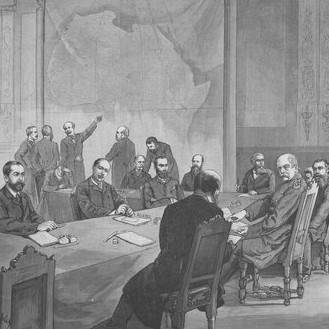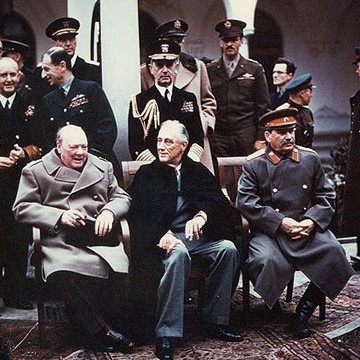I don’t know if you realized, but this weekend at MOVE:DC will be monumental. Because of you, leaders are traveling to Washington, DC from all over the world to participate in the Global Summit on the LRA.
In the past, similar meetings of world leaders have shaped history – both for bad and good – but MOVE:DC will be about justice.
Here are a few examples of meetings that have shaped history:
 1. Berlin Conference of 1884
1. Berlin Conference of 1884
At the request of German Chancellor Otto von Bismarck, 14 European representatives came together to partition the African continent on November 15, 1884 in a meeting called the Berlin Conference.
Prior to 1884, the continent was governed by local leaders and only the coastal regions were colonized. Under a “humanitarian front,” the members of the Berlin Conference opened exploitation of natural resources and people groups, who historically didn’t get along, under borders that didn’t follow the cultural and linguistic boundaries that already established.
By the end of the conference on February 26, 1884, each nation had laid claim to massive tracts of land and established colonies and protectorates. Stripping away rights of the local people, these moves have left deep scars in the land and the lives of those living in many African nations.
Under the control of Belgium’s King Leopold II, the natural resources of his “Congo Free State”, were exploited while upwards of 10 million people- half of it’s population – were killed. Governments across Africa were established in which Western leaders propped up certain sub-groups and discriminated against others. Both the Rwandan Genocide of early 1990s’ and the LRA conflict have it’s roots in the Berlin Conference. Moreover, official boundaries and many of the languages spoken in African nations today are derived from decisions made at this meeting.
2. Yalta Conference of 1945

At the end of World War II, Winston Churchill, Franklin Roosevelt, and Joseph Stalin came together at the Yalta Conference, which took place from February 4-11, 1945 in the Soviet city of Yalta.
The three traveled thousands of miles under great secrecy to discuss what would happen to the map of Europe and the Pacific after the war had ended. The small group would also discuss the Soviet Union’s part in combating the Japanese after the war with Nazis ended.
The trio talked, made compromises, and laid out a detailed plan which called for four promises. They agreed that Germany can only end the war with a full surrender and they set up a meeting to create the United Nations. Then, Stalin promised free elections would take place in Eastern European countries and to aid the United States in defeating the Japaneses Empire after Germany’s surrender. In return, the Soviet union would receive lands lost in a previous war.
Many of the stipulations that were discussed and put into action had lasting implications through the decades to follow. The Berlin Wall was placed up along boundaries set at this meeting and illustrated the divide of the Cold War.
3. United Nations Conference on International Organization of 1945
In the tail end of World War II and acting on the promises made at the Yalta Conference, leaders and delegations from 50 countries met in San Francisco, California on April 25th, 1945 to draft the Charter of the United Nations.
Overcoming language barriers, the 3,500-plus delegates and staff members rewrote and worked the Dumbarton Oaks plan, a proposal to replace the League of Nations and create the International Court of Justice (not to be confused with the International Criminal Court) to deal with gross human rights violations.
At the conference’s last session on June 25th of that year, the delegation presented the Charter of the United Nations and the Statute of the International Court of Justice. That very next day, representatives from every participating country signed the charter.
On October 24th 1945, the Charter of the United Nations was put into place when the five permanent security members and the Marjory of the original signed the ratification of the charter. From 1945 on, the United Nations formed the General Assembly, United Nations Frame Work Conventions, and UNICEF.
These three meetings are not the only ones of their kind, they are just examples of what can happen when world leaders gather with a common purpose. What will transpire this weekend is going to be monumental. Leaders, delegations and people who have the power to see justice served will converge on Washington DC. The summit taking place this weekend is about one thing: seeing that these leaders are committed to stopping the LRA.
These world leaders have been invited, and so have you. History will be taking attendance.
– Stew
Think people should hear about this?